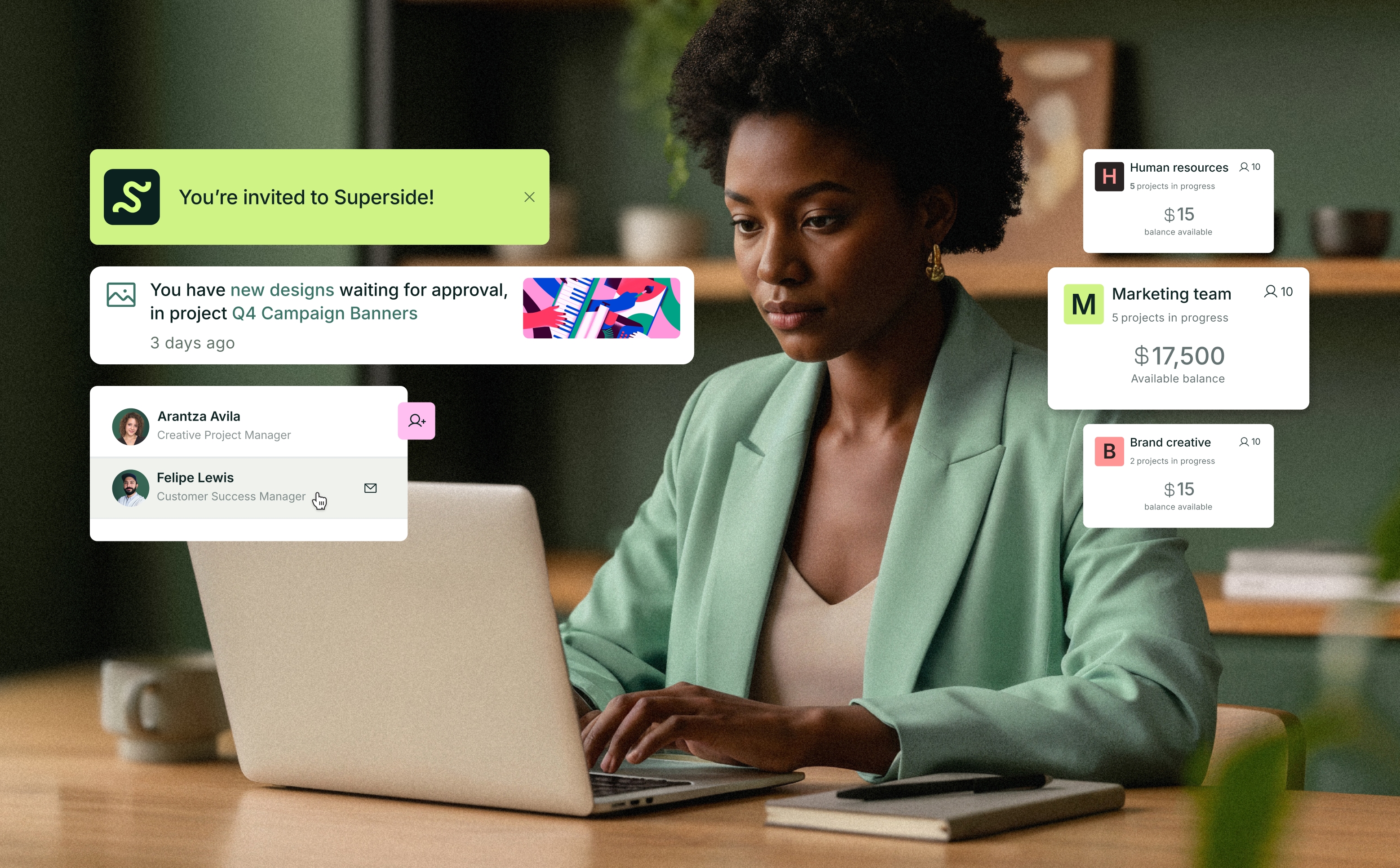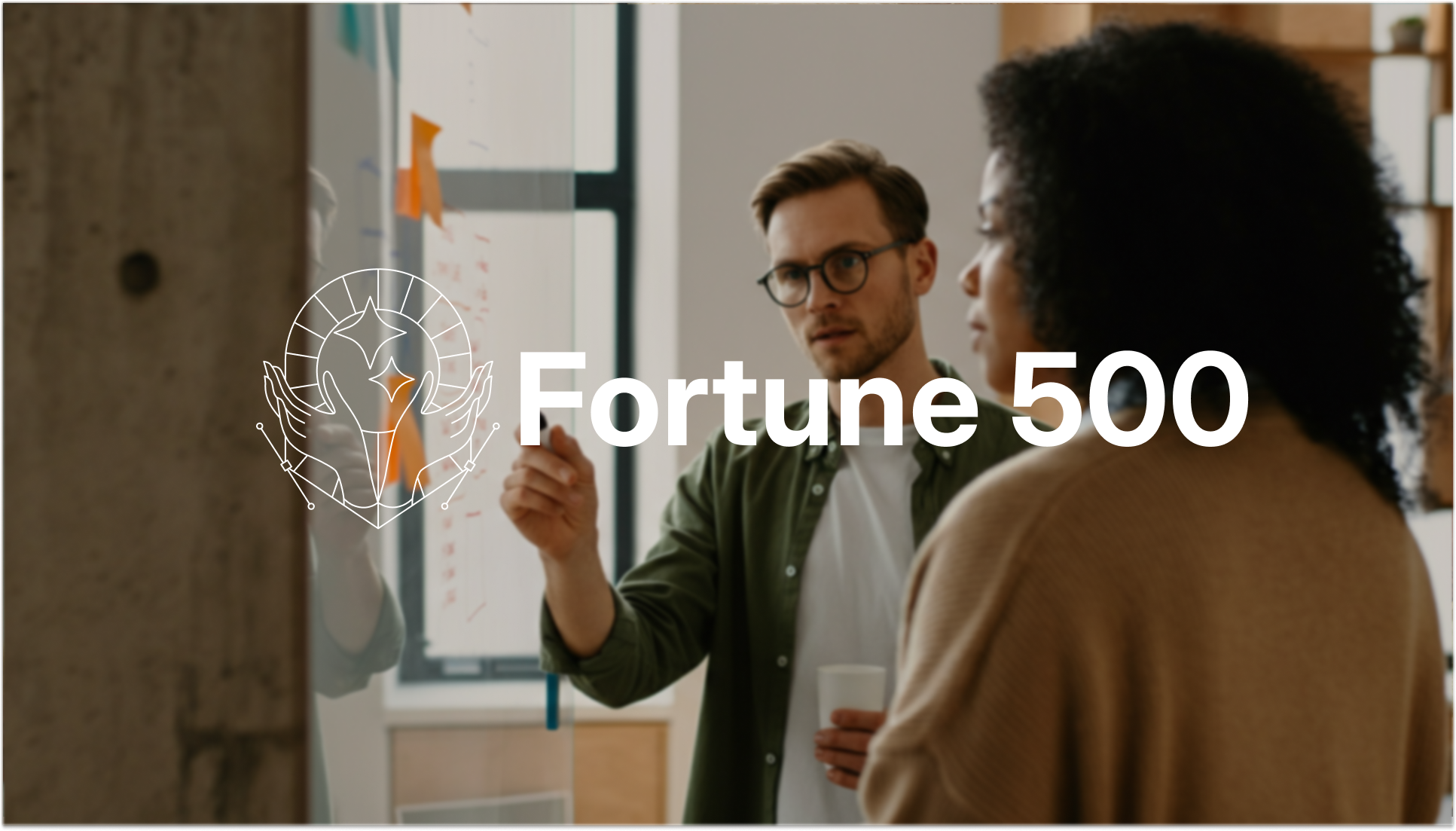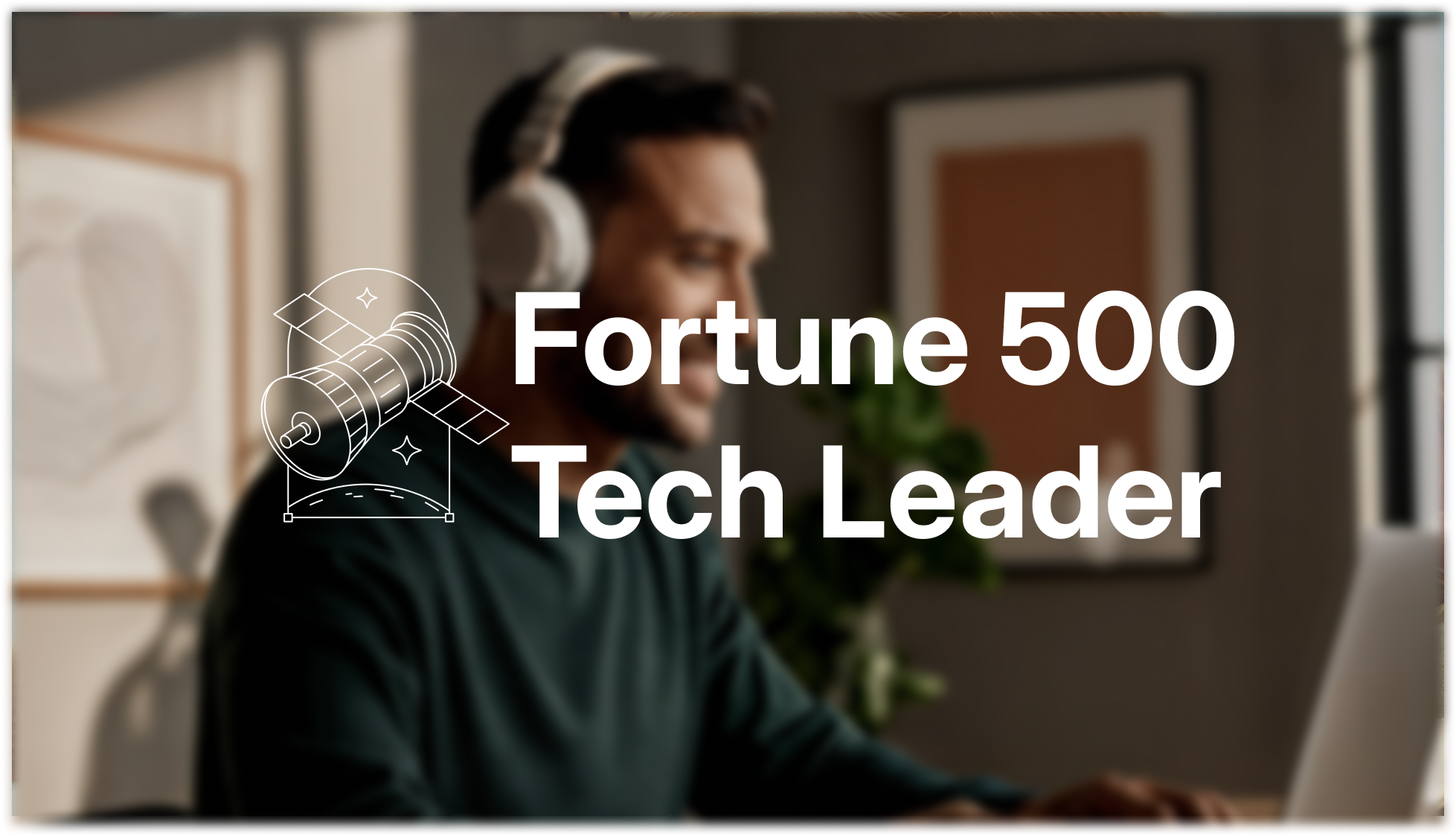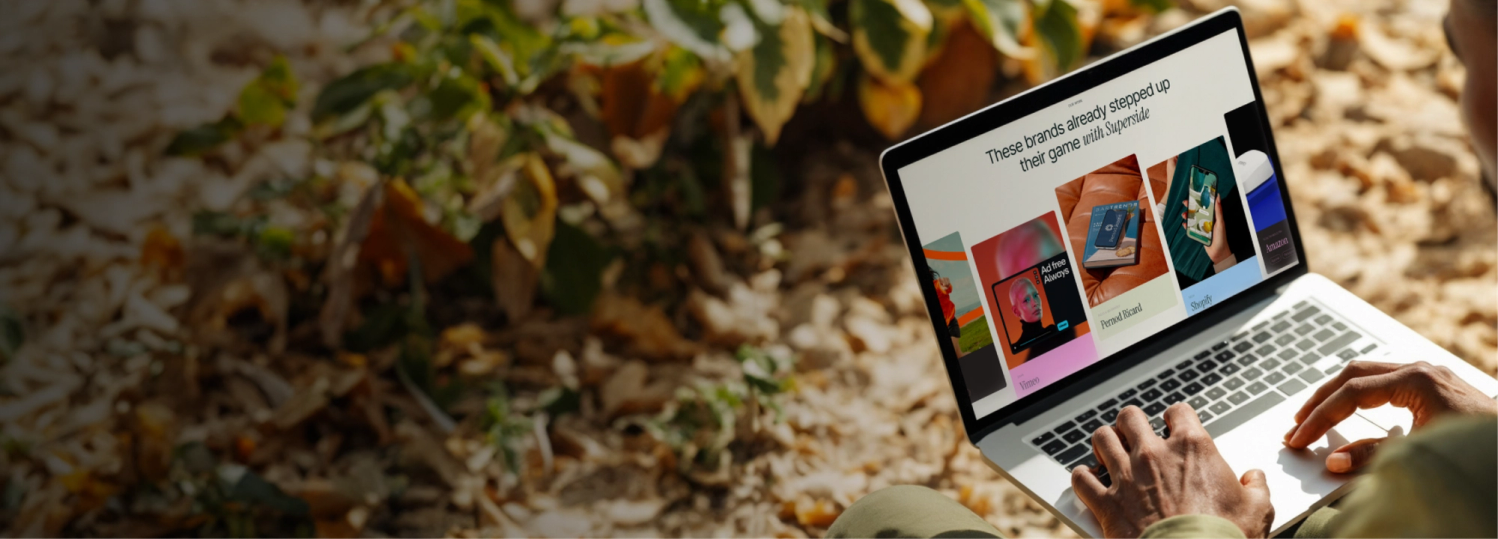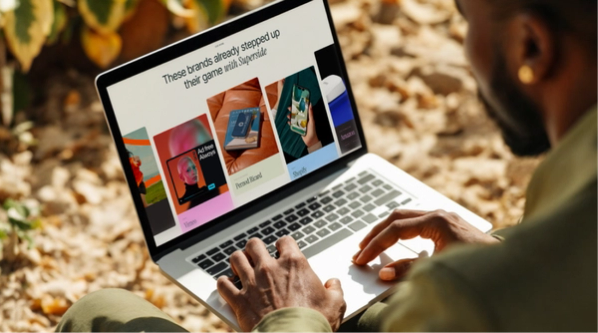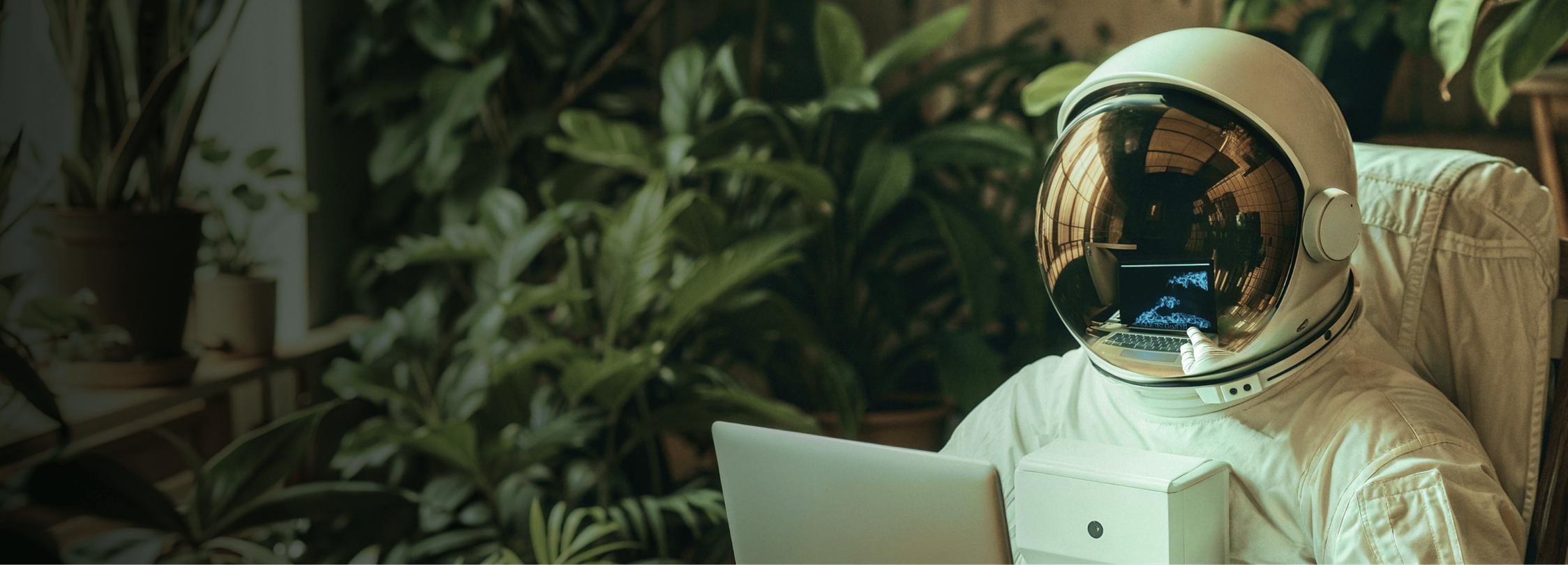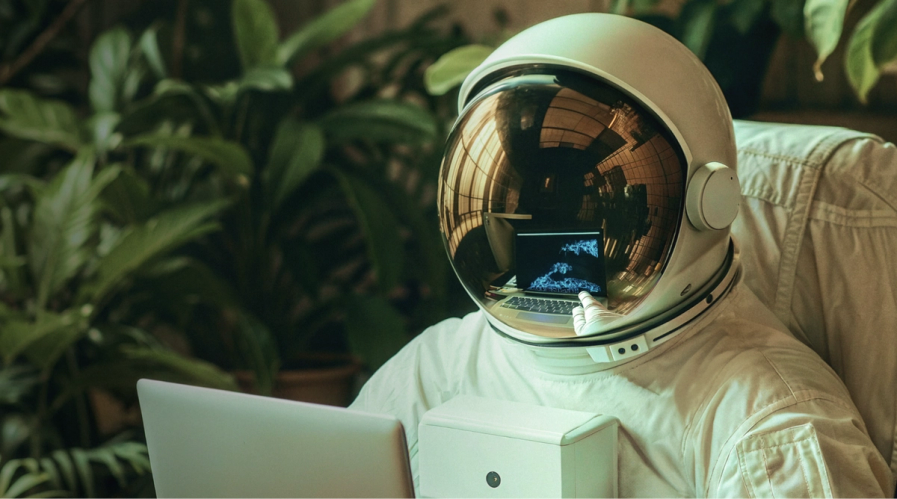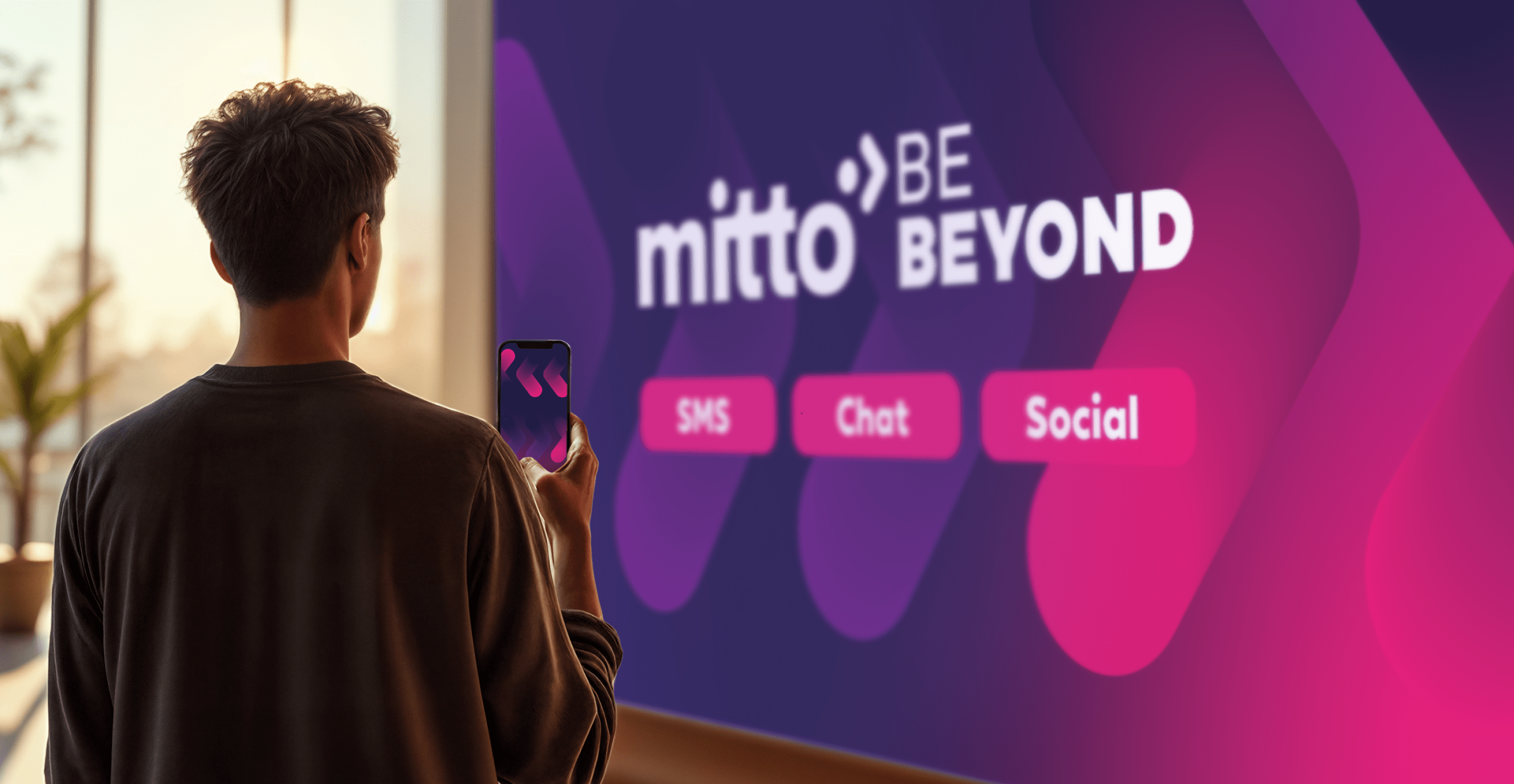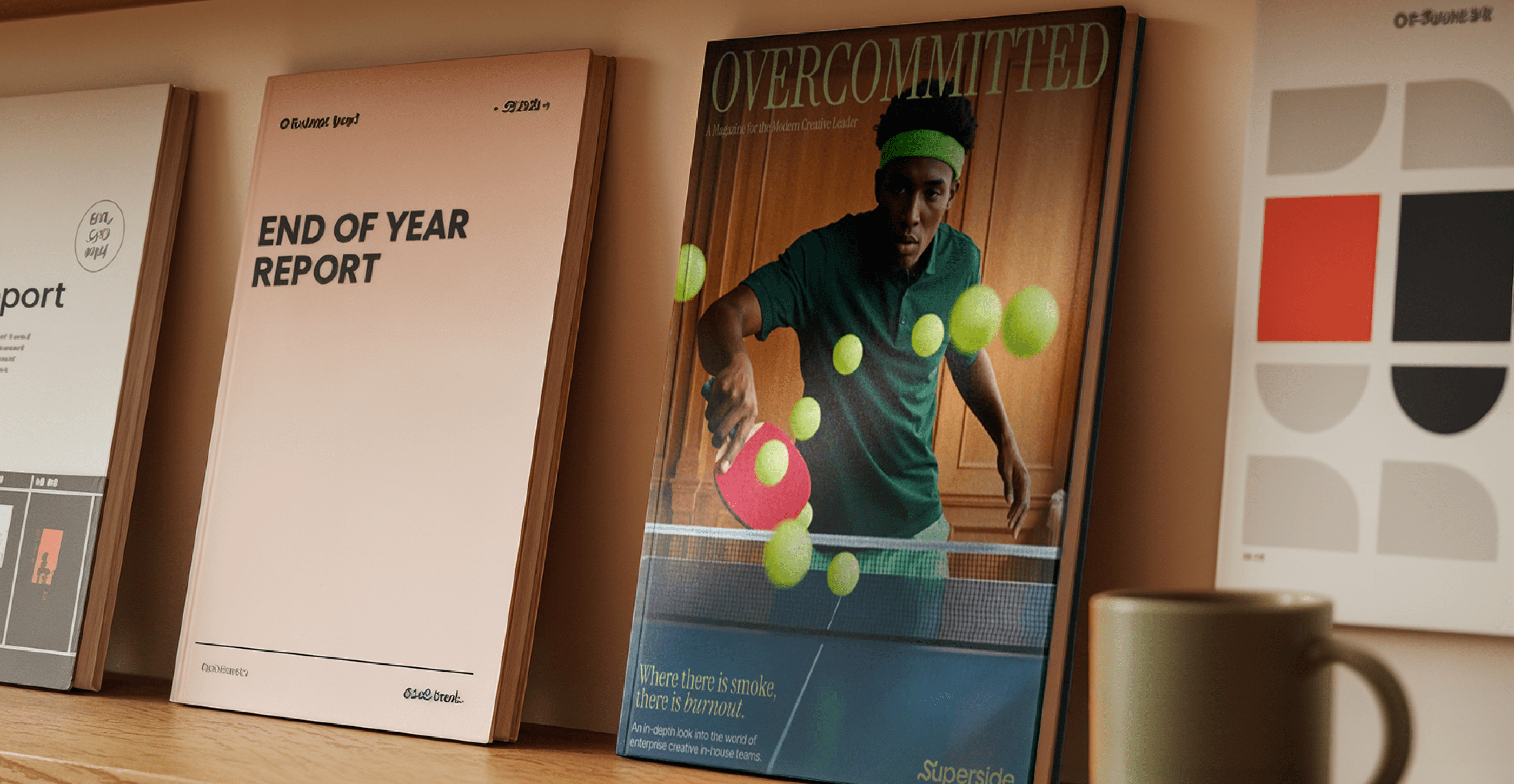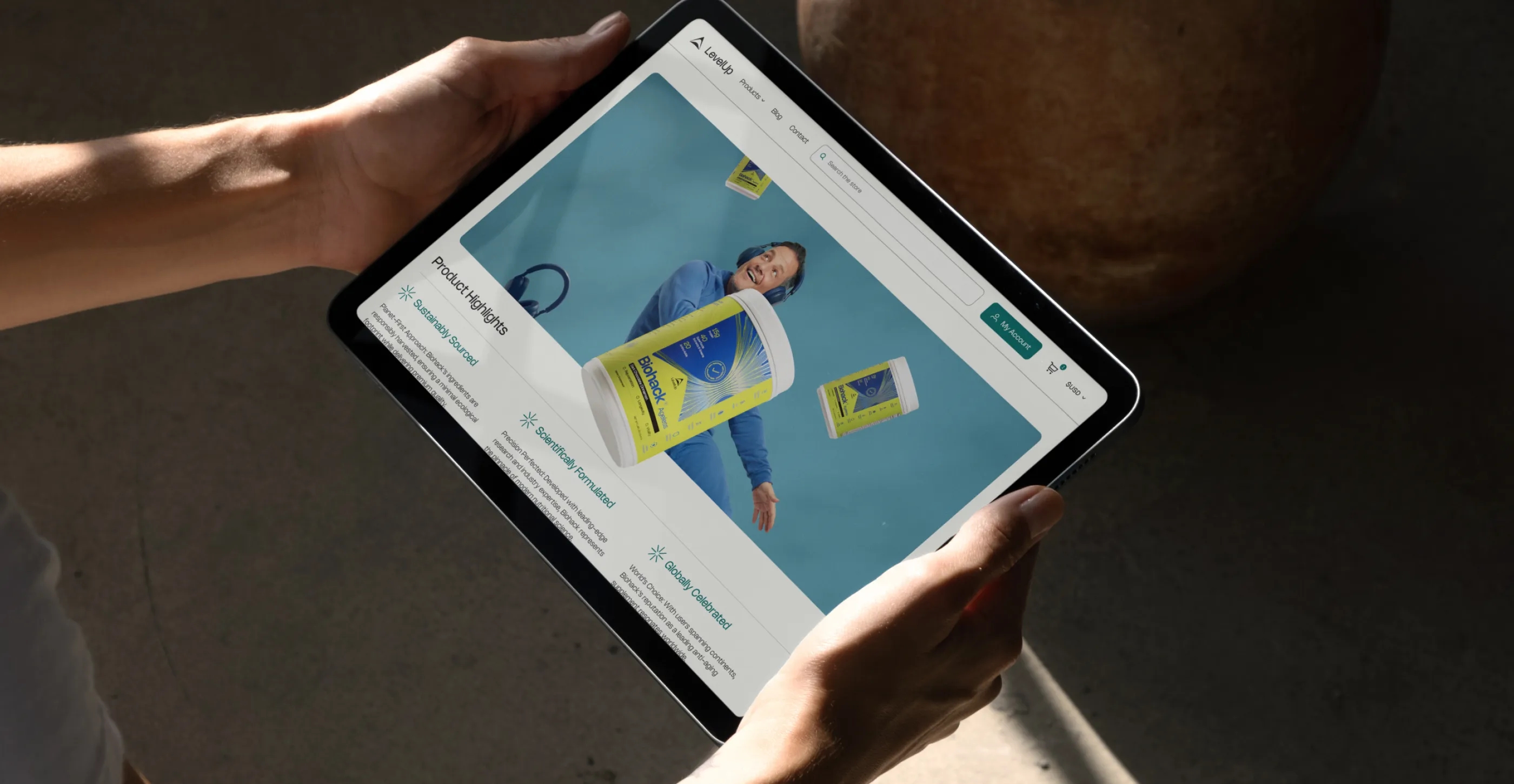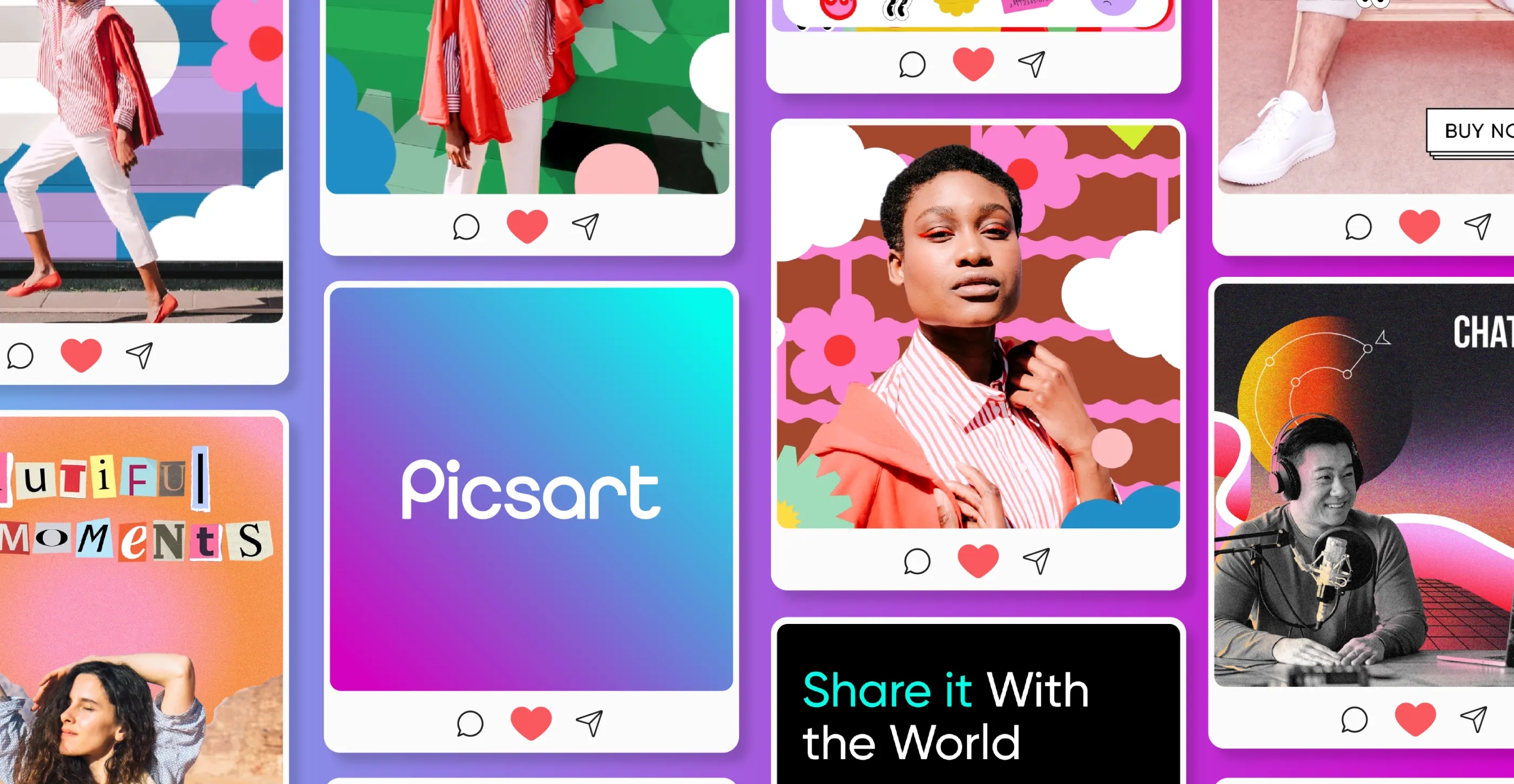
At a time when ad space is mega crowded, out-of-home (OOH) advertising rises above the noise and offers high visibility for brands. If you’re ready to engage your audience wherever they are, read on. We explore the power of OOH, what it takes to make a great OOH ad, plus nine campaigns that made us go “Ooh!”
Think out-of-home (OOH) advertising is outdated in today’s digital-first world? Think again. OOH ads remain an impactful form of brand communication.
From towering billboards along busy highways to interactive digital screens in urban centers, OOH involves capturing attention in the physical world, specifically when people are on the go and can’t see their digital devices.
In 2025, the most effective multichannel marketing campaigns blend physical and digital experiences, such as QR codes for exclusive content or AR ads that come to life. These tactics aren’t just trends: they help brands turn public spaces into creative, cultural touchpoints that achieve the most precious thing that most miss to do: be remembered.
Ready to grab attention with OOH advertisements? Check out nine of the most impressive recent OOH campaigns and discover what makes this medium so relevant and effective today.
The modern power of OOH in brand marketing
OOH’s power lies in its inescapable visibility, cultural relevance and ability to make bold, lasting impressions. And in a digitally saturated landscape, OOH advertising remains a formidable force in brand marketing.
In the United States, OOH advertising surpassed $9 billion for the first time in 2024, and worldwide projections suggest OOH advertising will reach $41.82 billion in spend this year.
This growth can be attributed to the fact that OOH advertising has evolved beyond its traditional formats, with advertisers creating more engaging and interactive experiences through digital out-of-home (DOOH) advertising, just like Salesloft did with Superside's creative support.
And DOOH is on the rise now. Having grown by 34% in 2024, it includes the use of AR, interactive displays and programmatic advertising to transform once static billboards into dynamic, experience-driven platforms.
However, classic billboards still have a powerful, high-converting impact as well.
Studies show that 71% of consumers frequently observe and digest messages on roadside billboards and 68% often make purchasing decisions while in the car. This high engagement is attributed to OOH’s ability to deliver memorable experiences that resonate with audiences while they go about their daily routines.
What’s more, OOH serves as a powerful tool for brand storytelling and to foster customer engagement and virality, particularly in high-traffic urban areas. Catchy campaigns that incorporate interactive elements or striking visuals often create buzz, increase social sharing and extend OOH’s reach beyond its physical location.
Research suggests that 47% of consumers search for social media handles featured in OOH ads, and 40% share related content online. This cross-channel integration demonstrates how OOH advertising can be a crucial component in omnichannel marketing strategies.
By aligning OOH campaigns with digital marketing, brands can reinforce messaging across multiple touchpoints.
Partnering with Superside, which also offers marketing strategy consulting services, means you’ll work with a consistent team of experts who handle almost everything you need at all times. Worry not about campaign development, and use the free time to strategize more.
What makes a great OOH ad campaign?
The best OOH campaigns don’t just occupy space: they make an impact.
Here are seven key factors to consider when assessing whether an OOH ad campaign is hitting the mark.
1. Clarity of message: Is it bold and quickly understandable?
Just like Collabera’s billboard, OOH ads must convey their message instantly. Whether someone is walking past a billboard or catching a glimpse from a moving vehicle, the message must be clear and memorable.
The most effective out-of-home marketing campaigns use clear, concise language and compelling visuals to ensure immediate comprehension.
If your audience has to think twice, you’ve lost them.
2. Visual creativity: Does it use design or motion to stand out?
With thousands of visual stimuli competing for attention, creative design is what stops people in their tracks.
Eye-catching visuals, clever use of space, 3D elements and motion in DOOH ads can help a campaign break through the noise.
3. Contextual relevance: Is it location-aware or culturally aligned?
OOH works best when it speaks directly to the environment in which it’s placed.
Contextually relevant, localized creative, whether tailored to a specific neighborhood, local culture or even weather conditions, feels personal and relatable. When your target audience sees themselves reflected in an ad, they’re more likely to engage with it.
4. Interactivity and shareability: Does it connect with digital channels or invite engagement?
If your campaign is worth photographing, sharing or scanning, it’s working harder for you.
Whether it’s a QR code, AR experience, hashtag or real-time social media integration, interactive elements invite participation and amplify reach.
5. Brand alignment: Is the tone, message and visual identity on-brand?
Out-of-home ads should feel like a natural extension of a brand’s voice. From color palettes and typography to messaging and tone, consistency across touchpoints reinforces brand recognition and trust.
When an OOH ad looks and sounds like the brand, it strengthens recall and loyalty.
6. Scalability: Can it be rolled out to other markets or platforms?
A truly successful OOH concept shouldn’t be limited by location. Evaluate whether the idea can be adapted across locations, languages and formats while retaining its core impact.
Scalable ideas are cost-effective and drive cohesive brand storytelling across markets.
7. Measurable results: Does it drive attention, foot traffic, mentions or conversions?
Finally, effectiveness needs proof.
Understanding mobile location data, foot traffic analysis, social media tracking and promotional code redemptions, your marketing team can assess the real-world impact of your OOH campaigns and make data-driven creative decisions.
9 creative OOH advertising examples to inspire brands in 2025
Let’s get into the round-up of top global OOH campaigns that made us look twice in the last few months.
1. Marqeta's ‘Modernizing Money Movement’ by Superside
- Type of OOH media: 120-foot LED display, featuring 3D animation.
Marqeta’s rapid growth in the fintech space from 100 to more than 900 employees in four years created internal creative pressure and bandwidth limitations.
So, when Marqeta decided to launch a high-visibility, high-impact OOH campaign in the heart of New York City, they knew they needed support, especially given they needed fast execution, fresh creative thinking and scalable support without having to make full-time hires.
- Campaign objective: Marqeta’s goal was clear: Create a show-stopping OOH campaign that leaves a lasting impression and reflects the ambitious growth of the company.
And who did they call to make it possible?
Superside was the key option to support their team to scale creative up to Times Square.
- Results: Superside helped deliver eight 2D billboard design concepts within two days and the entire 3D animation within five days. The project was handled entirely by our creative and project management teams, with no need for Marqeta to hire extra in-house staff.
Blending 2D creative elements with 3D animation for maximum impact, we helped Marqeta produce a powerful OOH ad campaign that would be displayed on large screens in one of the world’s most popular and crowded places!
Marqeta’s Creative Director, Bill Bonnefil, called Superside's top services “the perfect addition to our team,” showing that hiring a reliable creative partner for enterprise teams looking to create bold, impactful OOH campaigns can be possible and seamless when done right.
We are SO VERY PROUD of the final product.
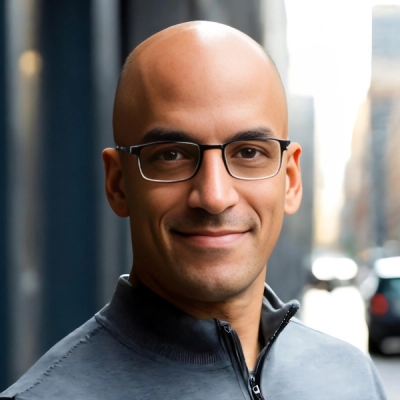
As a flexible, full-service extension of Marqeta’s in-house creative team, we delivered stunning results at speed and scale. And the best part? Zero revisions required. All assets were ready to go.
This agile turnaround wowed Marqeta’s internal stakeholders, freed up their internal teams, improved production efficiencies and saved them money. Not to mention the elevated brand exposure Marqeta enjoyed from an OOH campaign with serious stopping power in one of the world’s most iconic advertising locations.
- Location context: Times Square receives over 41.9 million visitors annually, so this location provided significant exposure and elevated Marqeta’s brand awareness on a global scale.
- Key takeaway: Agility is the future of enterprise creative. If you want the general public to get interested in your key offering as a fast-growing fintech, you need to show them the agility that comes with your products and services. Product explainer videos are always a hit, and Marqeta thrived in Times Square, meeting with the right people, using the right message at the right time.
As the world’s leading AI-powered creative service, Superside understands that excelling at OOH marketing can be challenging, especially for stretched creative teams.
If this sounds familiar, our creatives across graphic design, branding and video production can become your creative team’s creative team, helping them meet your OOH creative challenges at scale.
2. ‘Ski(n) Adventure’ by Kiehl’s
- Type of OOH media: Extra-large billboards and ski-lift posters.
This 2024/25 ski season campaign by premium skincare brand Kiehl’s literally took OOH to new heights—around 8,000 feet above sea level, in fact, to Austria’s Hochzillertal-Kaltenbach ski region.
Promoting its bestselling Ultra Facial Cream range, Kiehl’s dominated the slopes by effectively integrating traditional out-of-home advertising, experiential activations and influencer collaboration.
- Objective and results: Kiehl’s goal was to raise brand awareness and position itself as the go-to skincare brand for people who love adventure. The campaign’s multifaceted approach, including physical advertising, experiential marketing through a pop-up store and digital engagement via influencer collaboration, turned out to be a winning brand-building formula.
- Location context: The Hochzillertal-Kaltenbach region of the Austrian Alps is a popular destination for outdoor activities such as skiing, snowboarding and hiking. By positioning billboards and posters in peak traffic zones in this area, Kiehl’s directly addressed an audience exposed to environmental factors like cold temperatures and high altitudes, which can impact skin health. This strategic placement reinforced the relevance of the brand’s products for active, affluent consumers.
- Key takeaway for brands: Align your campaigns with your specific audience’s lifestyle, especially if you want to engage a niche market.
3. ‘See The Game Like We Do – FOREVER. FASTER.’ by PUMA
(Sources: Puma Group, Splash PR, Media Update)
- Type of OOH media: 3D billboards.
Part of the brand’s first worldwide campaign in 10 years, PUMA chose four high-traffic shopping malls in major cities across South Africa to strengthen its positioning as "The Fastest Sports Brand in the World.”
Digital screens featuring Manchester City soccer star Jack Grealish in action were used to convey the brand’s connection with speed and winning. The brand invited everyone—from professional athletes to everyday sports lovers—to break through limitations and achieve their own personal best.
Richard Teyssier, Vice President of Brand and Marketing at PUMA, said the campaign was “PUMA’s biggest marketing investment ever.” He added that the holistic brand message is emotional and distinctive, ensuring it connects and resonates with target consumers.
- Objective and results: The primary objective was to affirm and amplify PUMA’s positioning as the sports brand that makes athletes faster. Detailed campaign results are not available. However, the inclusion of a prominent sports star suggests this campaign would have had a significant impact on brand awareness and consumer engagement.
- Location context: The campaign locations, namely the V&A Waterfront (Cape Town), The Woods Shopping Centre and Fourways Mall (Johannesburg) and Gateway Mall (Durban), are among the most frequented shopping and entertainment hubs in South Africa. This set PUMA up to capture the attention of a diverse and substantial local audience, aligning with the campaign’s goal to reach both sports enthusiasts and the general public.
- Key takeaway for brands: Not every brand can work with the likes of soccer megastars. However, if your budget allows, consider leveraging influential figures who embody your brand’s values to help enhance credibility and connect with your target audience.
4. ‘Here comes the sun’ by IKEA
(Sources: Design Rush)
- Type of OOH media: Dynamic billboard.
No list of top ad campaigns would be complete without a contribution from IKEA.
Launched in Stockholm, Sweden in June 2024, “Here comes the sun” aimed to enhance the outdoor experience for café goers by addressing the notoriously limited sunshine during the Swedish summer.
How? In classic IKEA style, via a specially designed billboard equipped with a GPS-controlled motor and IKEA’s Nissedal mirror.
The setup allowed the mirror to track the sun’s position throughout the day and reflect sunlight onto shaded outdoor seating areas. It provided warmth and light to customers, encouraging the use of outdoor furniture even in less-than-ideal weather. This creative execution not only showcased IKEA’s product but also highlighted the brand’s commitment to resourceful solutions for everyday life.
- Objective and results: IKEA wanted to demonstrate its innovative approach to everyday problems, reinforcing its brand image as a provider of smart home solutions. The campaign received considerable positive attention, resulting in increased brand visibility and engagement. Its success has prompted IKEA to consider expanding the project to other locations in the future.
- Location context: Stockholm’s summer weather can be unpredictable and cool, resulting in underutilized outdoor seating. IKEA directly addressed a local challenge and reinforced the brand’s relevance in everyday Swedish life, as well as its dedication to improving customer experiences.
- Key takeaway for brands: Solve problems creatively. Addressing real-world issues with imaginative solutions can enhance brand perception and customer loyalty.
5. ‘Outage? Get outside’ by Decathlon
(Sources: Billups, Activative)
- Type of OOH media: Programmatic DOOH, including billboards and street-level screens.
In July 2024, a global cyber outage, resulting in widespread Microsoft Windows crashes, presented a clever marketing opportunity for the world’s largest sporting goods retailer, Decathlon.
In Canada, the brand moved quickly. In just three hours, Decathlon’s DOOH ads in Montreal and Toronto had been updated to mimic Microsoft’s “blue screen of death.”
The DOOH displayed a 50% discount offer via QR code, encouraging people to ditch their screens, get kitted up and get outside. The DOOH ads were amplified through a single social post on Decathlon’s Canadian channels.
- Objective and results: Obviously, there wasn’t much time for planning, but the intended quick win was to turn a current event into a brand-building exercise and sales opportunity. Along with garnering over a million impressions in just over six hours, the campaign generated global social buzz, showcasing the brand’s sense of humor and human side.
- Location context: By targeting areas with high foot traffic and a population significantly affected by the tech disruption, Decathlon effectively reached an audience who were likely to have some time on their hands for shopping.
- Key takeaway for brands: Think and act quickly when there’s an opportunity to leverage unforeseen events in a positive, creative way. Done right, this type of outdoor advertising can make your brand part of the cultural conversation.
6. ‘Should’ve’ by Specsavers
(Sources: Broadsign, B Brand Marketing)
- Type of OOH media: Digital billboards.
Specsavers Australia launched this witty OOH campaign at two of the country’s busiest airports in September 2024.
At Sydney Airport, arriving passengers were greeted with large digital billboards saying “Welcome to Melbourne,” while Melbourne Airport featured “Welcome to Sydney” signs.
This intentional misdirection led to momentary confusion, double-takes and much amusement—upon seeing the well-known “Should’ve gone to Specsavers” tagline in much smaller lettering below the billboards’ main message.
- Objective and results: Specsavers’ goal was to promote eye health awareness and regular eye tests by showing the consequences of poor eyesight in a lighthearted way. The campaign got a lot of positive feedback on social media, with audiences praising its cleverness and humor.
- Location context: Is there any place in the world where people are more likely to be looking up at signage than at an airport? By placing its messages exactly here, Specsavers captured the attention of travelers, many of whom could relate to the anxiety of arriving in the wrong city.
- Key takeaway for brands: Playfulness can work wonders in out-of-home advertising campaigns, but the secret is knowing how to have fun without totally confusing your audience.
7. ‘Designed on iPad’ by Apple
(Sources: Design Rush, Brand the Change)
- Type of OOH media: Static billboards.
To coincide with the 2024 Olympics in Paris, Apple collaborated with French illustrator and animator Simon Landrein to produce 23 bold, quirky illustrations, each created entirely on a 13-inch iPad Pro M4, using the Apple Pencil Pro. The illustrations were displayed on billboards throughout Paris and Marseille.
Landrein’s distinctive style, characterized by elongated limbs and dynamic poses, depicted athletes engaging in Olympic sports and everyday activities, such as weightlifting groceries or playing rugby on the train.
- Objective and results: Apple’s mission was to demonstrate the iPad Pro’s capabilities as a professional creative tool and reinforce its commitment to empowering creativity. The campaign garnered considerable praise for its originality and artistic merit, as well as Apple’s ability to engage with the Olympics in a subtle, creative manner, thereby enhancing brand perception without being a formal Olympics sponsor.
- Location context: The campaign’s locations enabled Apple to capitalize on the heightened public interest and increased foot traffic that the Olympics brought to the two cities.
- Key takeaway for brands: Make the most of cultural moments, actively seeking them out as you plan your marketing strategies. Aligning outdoor advertising campaigns with major events can amplify reach and relevance.
8. ‘Mean Girls’ transit ad campaign by Paramount Pictures
- Type of OOH media: Transit ads and billboards.
In early 2024, Paramount Pictures launched a clever campaign to promote the release of the “Mean Girls” musical film remake.
The campaign featured buses in Californian cities adorned with the phrase “Look both ways, Regina” scrawled in bright pink lipstick—a direct nod to the iconic scene from the 2004 cult film where Regina George is hit by a bus.
In the United Kingdom, the campaign included London bus shelter takeovers with quotable film lines like “You can’t sit with us,” and taxi wraps stating, “Get in, loser! We’re going shopping!”
- Objective and results: Paramount’s goal was to generate buzz and anticipation for the 2024 “Mean Girls” release, and this out-of-home advertising campaign firmly hit the mark (pun intended). It quickly gained traction on social media, where it received high praise for its cleverness and nostalgic appeal. The campaign also likely contributed to the film’s strong opening weekend in both the United States and the United Kingdom.
- Location context: By targeting urban centers with heavy foot and vehicle traffic, this campaign got maximum visibility among diverse demographics. The use of public transport and spaces, such as bus shelters and subway stations, ensured repeated exposure, reinforcing brand recall and generating hype among commuters and pedestrians alike.
- Key takeaway for brands: Nostalgia can be a powerful marketing tool in outdoor advertising. Tapping into well-known moments from popular culture can create an immediate emotional connection with your audience.
9. ‘Nature Shapes Britannia’ by Britannia
(Sources: Campaign Brief Asia, Little Black Book)
- Type of OOH media: Customized static billboards.
Leading fast-moving consumer goods company Britannia recently launched a creative campaign across India to highlight the brand’s environmental initiatives and convey its commitment to adapting to nature, rather than altering it.
Departing from conventional billboard design, the campaign integrated natural obstructions—specifically, nearby trees—into its creative elements. Each billboard’s typography and layout were uniquely tailored to accommodate the surrounding foliage, resulting in designs where the brand name curved, bent or adjusted to the tree’s presence.
To reinforce the outdoor ads’ eco-friendly message, the billboards were constructed using 100% biodegradable cotton materials.
- Objective and results: Britannia aimed to make a visual statement about its commitment to environmental sustainability, thereby encouraging a shift towards more eco-friendly advertising practices. The campaign received praise for its innovative integration of nature into marketing and has sparked conversations about sustainable advertising.
- Location context: Traditional out-of-home advertising typically avoids locations where natural elements obstruct visibility. In contrast, Britannia deliberately selected sites where trees would partially obscure the billboards, an unconventional choice that underscored the campaign's message of harmony with nature.
- Key takeaway for brands: Challenge industry norms. Reevaluating standard practices can lead to more meaningful, impactful messaging.
Ready to bring your OOH ideas to life?
By now, we’re sure you’ll agree that outdoor advertising is more relevant than ever for building brand awareness.
As today’s consumers grow increasingly desensitized to digital ads (and more fond of ad blockers), OOH offers a powerful, non-skippable medium that captures real-world attention in high-traffic environments.
From billboards and transit ads to dynamic digital displays in high-traffic areas, out-of-home advertising enhances brand visibility and reinforces trust through consistent, physical presence. Its ability to reach broad audiences, spark social media chatter and complement digital campaigns makes it a compelling marketing tool.
If you’re ready to make a statement in the real world—visually, culturally and strategically—it’s time to join forces with a creative partner that isn’t afraid of bold execution. Chat with us!



